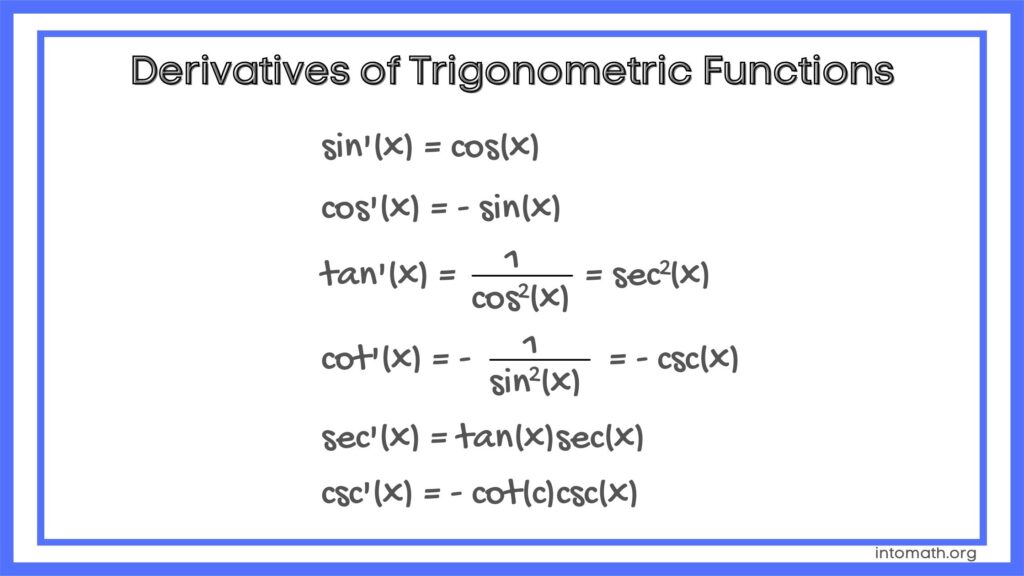Calculus: Derivatives
The First Derivative of a function is the slope of a tangent line to the function at a particular point (the Instantaneous Rate of Change).
The Second Derivative of a function determines the concavity of the function graph.
The following are possible notations for the first derivative:
(read as “f primed of x”,
“y primed”)
Derivative from First Principles
We can use a limit to calculate the first derivative with the following formula:

So, the limit in the above formula is based on the horizontal distance between the two points (since in order to calculate the slope of a line we need two points) on the curve and that distance approaches 0. It is a more accurate way of calculating the Instantaneous Rate of Change.
In order to evaluate the formula for a specific function, it needs to be simplified first, based on the function expression and then evaluated.
Example 1: Determine the rate of change at a point for a given function
at
Rate of change at a point on a curve = Slope of the tangent line to the curve at that particular point = First derivative
expand
expand
simplify
common factor the
reduce the
sub in 0 for
evaluate and simplify
The resulting expression represents the slope of the tangent line to ANY point on the curve for the above quadratic function.
Now, let’s substitute into this expression to determine the rate of change at a specific point for this particular function:
negative sign means the slope/rate of change is negative
For the function
the rate of change/slope of the tangent line/first derivative at
is
At a local maximum or a local minimum of a function, the first derivative will be 0, since the tangent line will be a horizontal line with a slope of 0.
Rules of Differentiation
Power Rule, Product Rule, Quotient Rule and Chain Rule
It is not always convenient to use the First Principles of Differentiation (the limit method) to determine the first derivative.
There are four rules that could be used instead to differentiate different types of functions.
Power Rule of Differentiation
A Power Rule is used to differentiate polynomial functions. It is also often used in combination with other rules of differentiation.
Given that , the first derivative is
Example: Differentiate the following function
a constant always differentiates into 0
The resulting expression represents the slope of a tangent line to any point on the graph of the function.
Product Rule of Differentiation
A Product Rule is used when we are dealing with the product of two functions.
Given that , the first derivative is
Example: Differentiate the following function
So, as you can see, in order to differentiate each function individually within the product, we also had to use the Power Rule.
Quotient Rule of Differentiation
A Quotient Rule is used when we are dividing two functions.
Given that , the first derivative is
Example: Differentiate the following function
Chain Rule of Differentiation
A Chain Rule is used when we are dealing with a function within another function – a composition of functions.
We first differentiate the outside and then multiply the result by the derivative of the inside.
Given the function , the derivative is
Example: Differentiate the following function
Second Derivative
The Second Derivative is determined by differentiating the first derivative.
The Second Derivative Test helps us identify the following:
The graph of will have a minimum at
if
and
will have a maximum at
if
and
There is a possibility of an inflection point at if
and
Example: Use first and second derivative test to find the local maximum or minimum for the following function
Power Rules to find the first derivative
Next, make this = 0 to find max/min points
,
,
Points, at which max/min occur
Now we need to determine where there is a max and where there is a min using second derivative test
there is an inflection point at
there is a minimum at
there is a maximum at


